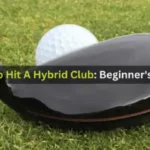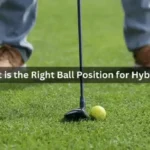Are you tired of constantly missing putts on the green? Do you feel like your putting game is holding you back from reaching your full potential on the golf course? It’s time to take your putting skills to the next level with some expert drills.
Whether you are a beginner or a seasoned golfer, improving your putting skills is essential for lowering your scores and becoming a more consistent player. In this article, we will discuss five expert putting drills that are guaranteed to help you improve your putting game and ultimately lower your scores on the golf course.
1. Mirror Alignment Drill
The mirror alignment drill is designed to help you achieve the correct alignment and improve your setup.
Benefits of the Mirror Alignment Drill:
- Improves visual confirmation of proper body alignment (eyes, shoulders, hips, and feet) with the target line.
- Promotes a more repeatable putting stroke.
- Helps identify and correct posture issues that might affect putting accuracy.
How to Perform the Mirror Alignment Drill:
Place a full-length mirror along the intended putting line. Position yourself so you can see your reflection and the target. This drill allows you to visually confirm that your eyes, shoulders, hips, and feet are parallel to the target line. Practice your putting stroke while ensuring that your body remains aligned correctly in the mirror.
Want to see this drill in action? Check out this helpful video that demonstrates the Mirror Alignment Drill:
Common Mistakes to Avoid When Performing Mirror Alignment Drill
The Mirror Alignment Drill is a popular technique used to ensure proper alignment during putting. However, many golfers make common mistakes when performing this drill, which can hinder its effectiveness and impede progress.
Lack of Proper Setup
One common mistake golfers make when performing the Mirror Alignment Drill is failing to set up correctly. Proper alignment starts with the golfer’s setup position, including their stance, posture, and alignment to the target.
If the golfer’s setup is incorrect, the rest of the drill becomes ineffective. It is essential to take the time to adjust the setup properly before beginning the drill.
Ignoring Body Alignment
Another mistake golfers often make is focusing only on aligning the putter head with the target line in the mirror. While this is important, golfers must also pay attention to aligning their body parallel to the target line.
Ignoring body alignment can lead to inconsistent strokes and missed putts. The mirror should reflect not only the putter head but also the golfer’s body alignment to provide a comprehensive view.
Overlooking Eye Position
Eye position plays a crucial role in putting, yet many golfers overlook it when performing the Mirror Alignment Drill. The eyes should be directly over the ball or slightly inside the target line to ensure proper alignment.
Incorrect eye position can result in misalignment and poor stroke mechanics. Golfers should use the mirror to check their eye position and make adjustments as needed.
Lack of Focus on Stroke Path
While the Mirror Alignment Drill primarily focuses on alignment, golfers should also pay attention to their stroke path. A common mistake is neglecting to track the putter head’s path during the stroke in the mirror.
Monitoring the putter’s path can help golfers identify any deviations or inconsistencies in their stroke, allowing them to make necessary corrections for improved performance.
Failure to Incorporate Feedback
One of the main purposes of the Mirror Alignment Drill is to provide instant visual feedback on alignment and stroke mechanics. However, some golfers fail to utilize this feedback effectively.
It is essential to use the mirror as a tool for self-assessment and make adjustments based on the feedback received. Ignoring the feedback limits the effectiveness of the drill and impedes skill development.
2. Gate Drill
The gate drill focuses on improving your accuracy and consistency in hitting your target.
Benefits of the Gate Drill:
- Improves putting accuracy by promoting a straight back and through stroke.
- Enhances putter face control for better directional control of the ball.
- Provides immediate visual feedback on your stroke path.
How to Perform the Gate Drill:
Set up two alignment rods or tees slightly wider than the width of your putter head. Position the gates a few feet in front of you on your target line. The goal is to roll the ball through the gates consistently. This drill helps you develop a straight back and straight through putting stroke, leading to better control over your ball direction.
Want to see this drill in action? Check out this helpful video that demonstrates the Gate Drill:
Common Mistakes to Avoid When Performing Gate Drill
The Gate Drill in golf is a valuable training exercise that can help golfers improve their accuracy and consistency on the putting green. While this drill is highly effective when executed correctly, there are common mistakes that golfers often make while performing the gate drill that can hinder its effectiveness.
Proper Alignment of the Gate
One of the key elements of the Gate Drill is ensuring that the gate is properly aligned with the intended target line. Many golfers make the mistake of setting up the gate incorrectly, which can lead to misleading feedback during practice.
To avoid this mistake, take the time to use a alignment tool or laser to make sure that the gate is perfectly in line with your target. This attention to detail will provide more accurate feedback on your putt’s starting direction.
Clubface Alignment
Another common mistake golfers make during the Gate Drill is improper alignment of the clubface at address. It’s essential to ensure that the putter face is square to the target line before taking your stroke.
Misaligning the clubface can lead to off-center strikes and poor direction control. Take a moment to check that the putter face is aiming directly down the target line before each putt to ingrain proper alignment habits.
Stroke Mechanics
Proper stroke mechanics are crucial for success in the Gate Drill. Some golfers make the mistake of decelerating through impact or introducing unnecessary wrist action into their stroke.
To execute the drill effectively, focus on maintaining a smooth and consistent stroke tempo, allowing the putter to swing freely through the ball. Avoid steering the putter or manipulating the clubhead through impact to ensure a clean strike.
Feedback Interpretation
Misinterpreting feedback is another common mistake golfers make while practicing the Gate Drill. It’s essential to understand the feedback the gate provides and make the necessary adjustments.
If your putts consistently miss the gate to the right, you may be pushing or pulling your putts. Conversely, missing the gate to the left indicates a different issue. Use the gate as a tool to diagnose problems in your stroke and make corrections accordingly.
Practice Routine
Consistency is key when incorporating the Gate Drill into your practice routine. Many golfers make the mistake of only using the gate occasionally or without a structured plan.
To see improvement, commit to regular practice sessions with the gate, focusing on different aspects of your putting stroke each time. Developing a consistent and purposeful practice routine will help ingrain proper mechanics and improve your putting performance.
3. Around the Clock Drill
The around the clock drill is beneficial for developing distance control and touch on longer putts.
Benefits of the Clock Drill:
- Develops distance control and touch for varying putt lengths.
- Improves feel for the putting stroke and green speed.
- Enhances your ability to judge and control putting pace.
How to Perform the Clock Drill:
Place several tee markers at increasing distances in a circular pattern around the hole, resembling the face of a clock. Start with short putts and work your way back to longer putts. Focus on maintaining a smooth tempo and accelerating through the ball to control the distance. This drill helps you gain a better feel for different putt lengths and improves your overall speed control.
Want to see this drill in action? Check out this helpful video that demonstrates the Clock Drill:
4. Coin Putting Drill
The coin putting drill is geared towards enhancing your ability to start the ball on the intended line.
Benefits of the Coin Putting Drill:
- Improves focus on your aim point, ensuring the putt starts on the intended line.
- Develops a more consistent and accurate putting stroke.
- Enhances your green reading skills by helping you judge pace and line.
How to Perform the Coin Putting Drill:
Position a coin or a ball marker a few feet away from you on a straight putt. Aim to roll your ball over the coin consistently. This drill encourages you to focus on your aim point and start your putts on the right line. It helps in developing a more accurate stroke and fine-tuning your green reading skills.
Want to see this drill in action? Check out this helpful video that demonstrates the Coin Putting Drill:
5. One-Handed Putting Drill
The one-handed putting drill is designed to promote a smoother stroke and improve your feel for distance.
Benefits of the One-Handed Putting Drill:
- Promotes a smoother putting stroke with less hand action.
- Enhances your feel for distance control and putter face impact.
- Helps eliminate excess wrist action for better putting consistency.
- Improves your sense of balance and putting rhythm.
How to Perform the One-Handed Putting Drill:
Practice putting with only your lead hand, whether it’s your left hand for right-handed golfers or vice versa. By using one hand, you enhance your sense of touch and distance control. This drill also helps in eliminating excess wrist action and promoting a more pendulum-like motion, leading to more consistent and accurate putts.
Want to see this drill in action? Check out this helpful video that demonstrates the One-Handed Putting Drill:
FAQS
Q: What are the benefits of practicing putting drills?
A: Practicing putting drills helps improve accuracy, distance control, and consistency on the greens, leading to lower scores.
Q: How often should I practice these putting drills?
A: It’s recommended to practice these drills regularly, ideally a few times a week, to see improvement in your putting game.
Q: Can these drills help with short putts as well as long putts?
A: Yes, these drills are designed to improve your putting from various distances, including short and long putts.
Q: Do I need any special equipment for these drills?
A: While some drills may benefit from specific training aids like putting alignment tools or gates, most can be done with just your putter and golf balls.
Q: Should I focus on one drill at a time or mix them up during practice?
A: It’s beneficial to mix up the drills to work on different aspects of your putting game and keep your practice sessions engaging.







